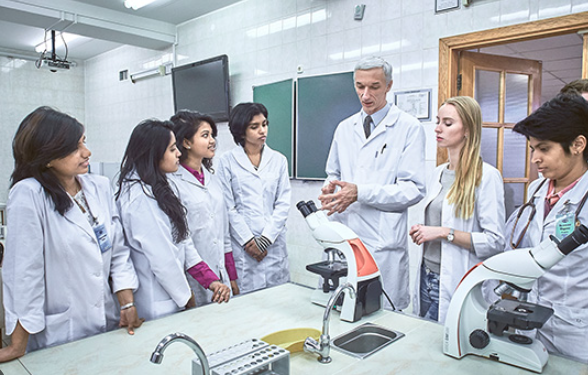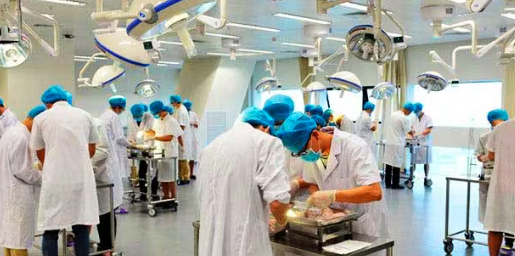Complete USMLE, obtain ECFMG certification, and secure a residency.
Table of Contents
Steps to Take After Completing MBBS in China
Completing an MBBS degree in China is a significant achievement, but transitioning to practicing medicine in the United States involves several critical steps. The process demands thorough preparation, understanding of the US medical system, and compliance with specific requirements.

Evaluating Your Degree with ECFMG
Before embarking on the journey to become a licensed doctor in the USA, graduates holding an MBBS degree from China must have their credentials verified and evaluated by the Educational Commission for Foreign Medical Graduates (ECFMG). This organization serves as the gateway for all foreign medical graduates seeking to enter residency or fellowship programs in the United States.
Key steps for ECFMG certification include:
Registration with ECFMG: Create an ECFMG Online Services account. This platform is where you’ll submit your application, track your ECFMG certification status, and access important resources.
Credential Verification: Submit copies of your MBBS degree and transcripts. ECFMG will verify these documents with your medical school in China. Ensure that your medical school is listed in the World Directory of Medical Schools for eligibility.
English Language Proficiency: Demonstrate proficiency in English, typically through exams like TOEFL.
Exam Requirements: Pass the USMLE Step 1 and Step 2 Clinical Knowledge (CK) examinations, which are crucial components of the ECFMG certification process.
Preparing for the United States Medical Licensing Examination (USMLE)
The USMLE is a three-step examination for medical licensure in the United States. For MBBS graduates from China, focusing on USMLE preparation is crucial.
Key aspects of USMLE preparation include:
- Understanding USMLE Format and Content: Familiarize yourself with the format, content, and expectations of each USMLE step. USMLE Step 1 covers basic medical sciences, Step 2 CK focuses on clinical knowledge, and Step 3 involves patient management skills.
- Study Materials and Resources: Utilize a variety of study materials, including textbooks, review courses, and online resources. Kaplan and UWorld are popular among USMLE aspirants for their comprehensive content.
- Developing a Study Plan: Create a structured study plan that allocates ample time for each subject area. Regular self-assessment with practice tests helps track progress and identify areas needing improvement.
- Clinical Experience: Gaining clinical experience in the United States, even if it’s observational, can provide valuable insights into the healthcare system and clinical practices, enhancing your understanding and application of medical knowledge.
Navigating the USMLE (United States Medical Licensing Examination)
The United States Medical Licensing Examination (USMLE) is a critical step for any medical graduate aspiring to practice in the USA. It assesses a candidate’s ability to apply knowledge, concepts, and principles essential for effective health care. Each step of the USMLE presents unique challenges and requires specific preparation strategies.
Strategies for USMLE Step 1: Basic Medical Sciences
USMLE Step 1 tests the foundational knowledge of medical sciences. The exam comprises around 280 multiple-choice questions, covering basic subjects like anatomy, biochemistry, pathology, and pharmacology.
Key preparation strategies:
- Focus on High-Yield Subjects: Emphasize subjects like pathology and pharmacology, known for their high question volume in the exam.
- Use Comprehensive Review Books: Resources like First Aid for the USMLE Step 1 are indispensable for thorough preparation.
- Practice with Question Banks: Regularly solving questions from QBanks like UWorld helps in understanding the exam pattern and improving time management skills.
Preparing for USMLE Step 2 CK: Clinical Knowledge
USMLE Step 2 CK assesses the ability to apply medical knowledge in a clinical setting. This exam consists of approximately 318 multiple-choice questions.
Effective preparation tips:
- Understand Clinical Scenarios: Focus on understanding and interpreting clinical scenarios, as questions are often presented as case vignettes.
- Review Clinical Knowledge: Concentrate on internal medicine, surgery, pediatrics, obstetrics and gynecology, and psychiatry.
- Mock Exams: Regular practice through mock exams can greatly enhance time management and question interpretation skills.
Approaching USMLE Step 2 CS: Clinical Skills
USMLE Step 2 CS evaluates clinical skills through patient interactions. This exam involves 12 patient cases where candidates are assessed on communication, patient care, and medical knowledge.
Strategies for success:
- Develop Strong Communication Skills: Effective communication with patients is crucial. Practice summarizing patient histories and explaining diagnoses.
- Clinical Practice: Engage in as much clinical practice as possible, focusing on patient interviews and physical examinations.
- Mock Patient Encounters: Simulate patient encounters with peers or mentors to enhance bedside manners and diagnostic skills.
Tackling USMLE Step 3: Patient Management
USMLE Step 3 is the final step, focusing on patient management in an ambulatory setting. It’s a two-day exam, with the first day comprising around 233 multiple-choice questions and the second day consisting of 180 multiple-choice questions and 13 computer-based case simulations.
Preparation tactics:
- Advanced Clinical Knowledge: Deepen your understanding of patient management, especially in outpatient settings.
- Case Simulations: Practice computer-based case simulations to adapt to the format of the second day of the exam.
- Time Management: Develop effective time management strategies, crucial for handling the lengthy and complex nature of this exam.

Securing Residency in the United States
After completing the USMLE, the next critical step for medical graduates, especially those from abroad, is securing a residency position in the United States. This process involves navigating the National Resident Matching Program (NRMP) and mastering residency interviews.
Applying for Residency through the National Resident Matching Program (NRMP)
The NRMP, or ‘The Match’, is a centralized system used to match applicants’ preferences with available residency positions in U.S. programs.
Key components of the NRMP application process:
- Creating a Strong Application: Your application must include your USMLE scores, Educational Commission for Foreign Medical Graduates (ECFMG) certification, letters of recommendation, a personal statement, and your medical school transcript.
- Research and Select Residency Programs: Choose programs that align with your career goals and have a history of accepting international medical graduates (IMGs).
- Understand the Timeline: The Match process follows a strict timeline, usually culminating in March. Adhering to this timeline is crucial for a successful application.
Tips for Successful Residency Interviews
Residency interviews are pivotal in the selection process and provide an opportunity for candidates to make a lasting impression.
Effective strategies for residency interviews:
- Prepare Thoroughly: Research each program thoroughly. Understand their values, specialties, and what they look for in a candidate.
- Practice Common Interview Questions: Be ready to discuss your background, why you chose a particular specialty, and how you handle stress and conflict.
- Showcase Communication Skills: Demonstrate clear, confident communication skills. Be articulate about your experiences, aspirations, and what you bring to the program.
- Ask Insightful Questions: Show your genuine interest in the program by asking specific questions about their curriculum, faculty, resident responsibilities, and community involvement.
- Follow-up: Send personalized thank you notes to each interviewer, expressing your appreciation for the opportunity and reiterating your interest in the program.
Professional Development and Continuing Education
For medical professionals, especially those who have completed their MBBS in another country and are transitioning to practice in the United States, ongoing professional development and continuing education are crucial. These aspects not only enhance medical knowledge and skills but also ensure compliance with evolving healthcare standards and practices.
Acquiring Medical Experience in the USA
Gaining practical medical experience in the United States is essential for integrating into the healthcare system and understanding its nuances.
Effective ways to acquire medical experience:
- Observerships and Externships: Participate in observerships or externships in U.S. hospitals. These opportunities provide exposure to the U.S. healthcare environment and patient interaction, albeit in a non-clinical role.
- Research Positions: Engage in clinical research projects at medical institutions. This not only enhances understanding of medical practices but also adds significant value to your CV.
- Networking: Actively network with healthcare professionals and join professional medical associations to build relationships and learn about additional opportunities.
- Volunteering: Volunteer at healthcare facilities or community health events. This demonstrates commitment and provides practical exposure.
Opportunities for Continuing Medical Education
Continuing Medical Education (CME) is vital for staying current with the latest developments in medicine and maintaining licensure.
Key aspects of CME:
- Accredited CME Programs: Engage in accredited CME programs, which are often required for maintaining medical licensure. These programs cover various topics and can be found through professional societies, medical schools, or online platforms.
- Conferences and Workshops: Attend medical conferences and workshops. These events not only provide CME credits but also opportunities for networking and professional growth.
- Online Learning Platforms: Utilize online platforms offering CME courses, which are flexible and can be tailored to individual learning needs and specialties.
- Journal Clubs and Academic Sessions: Participate in journal clubs and academic sessions within your institution or professional groups. Discussing recent research and clinical cases helps in staying abreast of new information and practices.

Long-term Career Pathways
For medical professionals, particularly those who have transitioned from international backgrounds such as an MBBS in China to practicing in the United States, understanding and navigating long-term career pathways is crucial. These pathways often involve specialization and fellowship opportunities and require a deep understanding of the American medical career landscape.
Options for Specialization and Fellowship
After completing residency, physicians often consider further specialization through fellowships or additional training. This specialization can lead to expertise in specific medical fields.
Exploring specialization options:
Identify Areas of Interest: Determine which medical fields align with your interests and career goals. Specializations can range from cardiology and neurology to oncology and beyond.
Research Fellowship Programs: Investigate fellowship programs that offer advanced training in your chosen specialty. These programs typically last 1-3 years.
Consider the Competitive Nature: Some specializations are more competitive than others. Evaluate the competitiveness of your desired field and prepare accordingly.
Understand Certification Requirements: Each specialty has its board certification, which often requires passing additional examinations and meeting specific training requirements.
Understanding the American Medical Career Landscape
Navigating the American medical career landscape requires an understanding of the various roles and opportunities available beyond clinical practice.
Key aspects of the American medical career landscape:
Academic Medicine: Explore careers in academic medicine, which include teaching, research, and involvement in medical education.
Hospital Administration: Consider roles in hospital administration or healthcare management, where physicians can impact healthcare delivery and policy.
Private Practice: Some physicians opt to open or join private practices, offering more autonomy in terms of business and patient care.
Continued Learning and Adaptation: Stay informed about changes in healthcare laws, technology, and best practices. Continuous learning is vital for career growth and adaptation in a rapidly evolving field.

